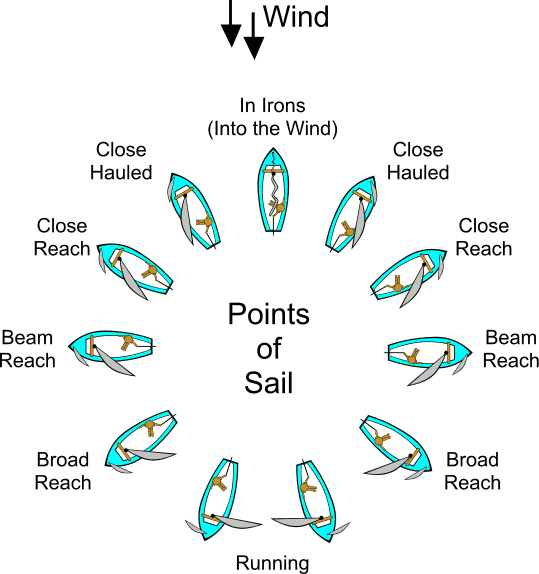Physics of Sailing
One of my favorite things to do during the fall and summer is sailing. Along with skiing, I think that sailing is one of the most physics filled activites you can partake in. Sailing is infinatly more complicated than most people think it to be, there are an unimaginable amount of variables that come into play when trying to harness the wind to move a boat.
The sail is obviously the most crutial element to the sailboat. The sail provides a wide and flexible shute in which the wind is caught. When traveling perpandicular to the direction of the wind the sail only does half the work for the boat. Each sailboat has some sort of flat board that hangs below the boat. Since the wind is actually pushing the boat sideways, this center board provides a flat surface which counter acts the direction the wind is pushing the boat, so the boat is able to move foward under the power of the wind.
Another element to the physics behind sailing is the angle of the sail. The sail position is the most important element to getting a sailboat to move. For an experienced sailor these sail positions become second nature, but for someone whos never been out on a sailboat before the positions of the sail in regaurd to the wind can be a very confusing concept. The sail must always be perpandicular to the direction of the wind. The crew or skipper of the boat has control of the sail position, so whoever is in control can let out the sail or haul it in, which will adjust the angle between the side of the boat and the sail from any angle from 0 to 90 degrees.





5 Comments
Recommended Comments